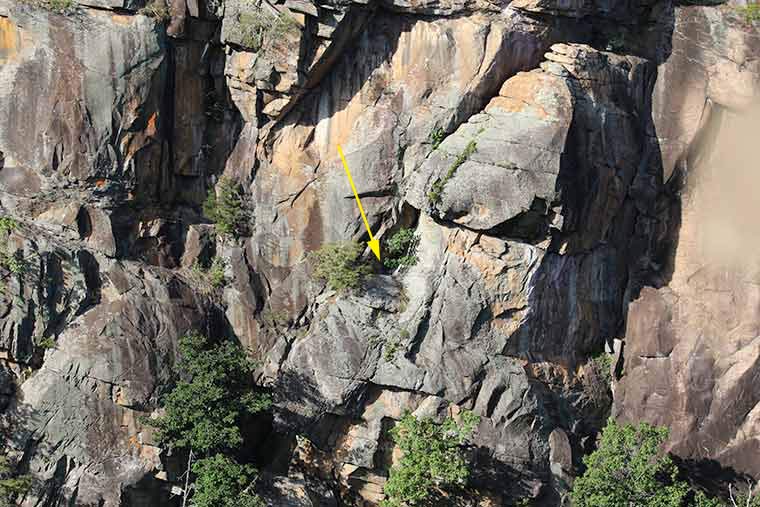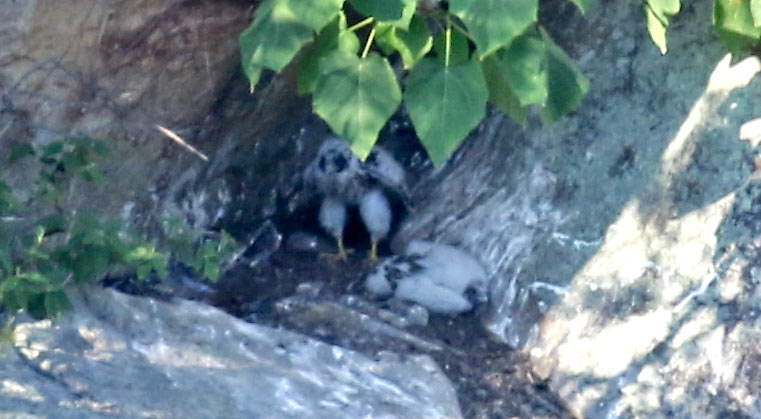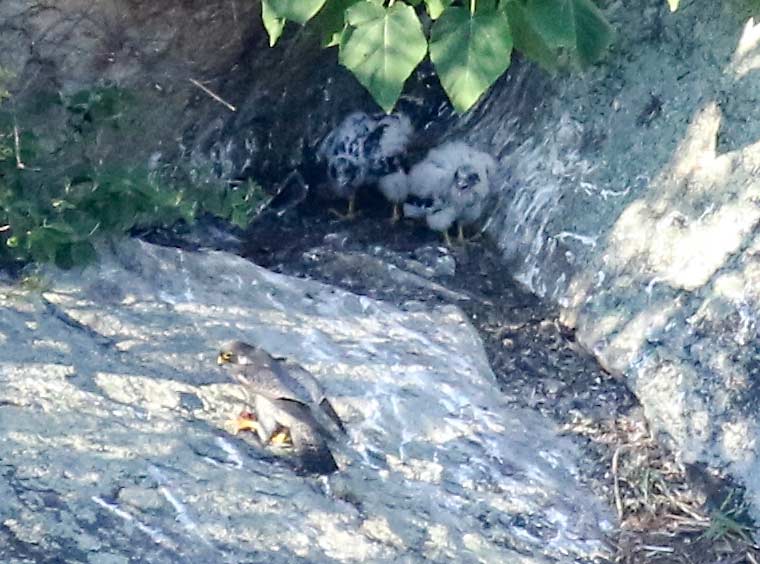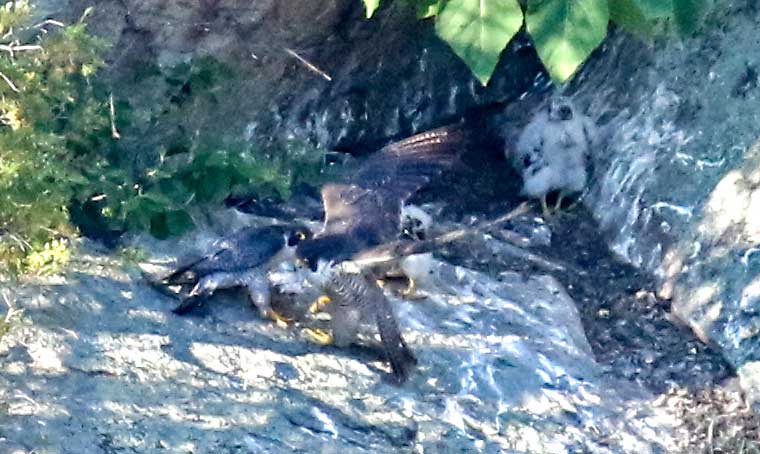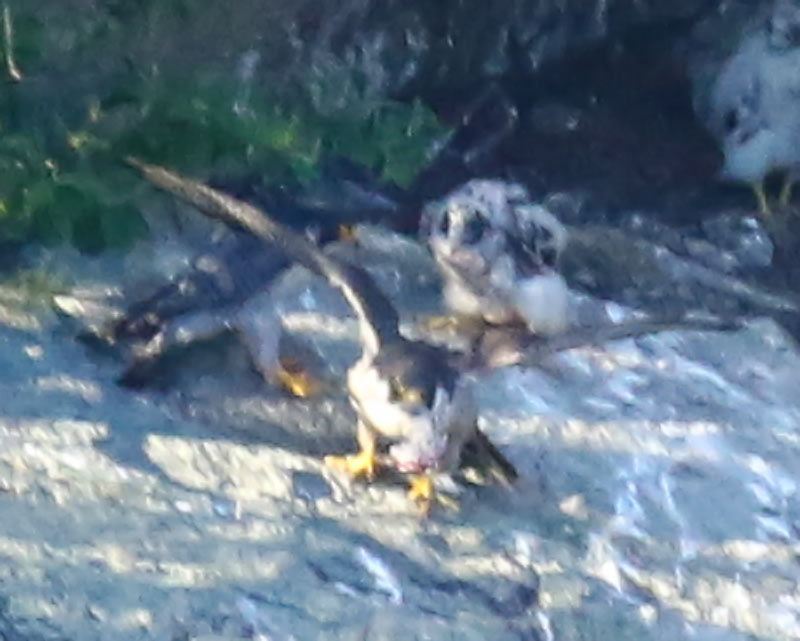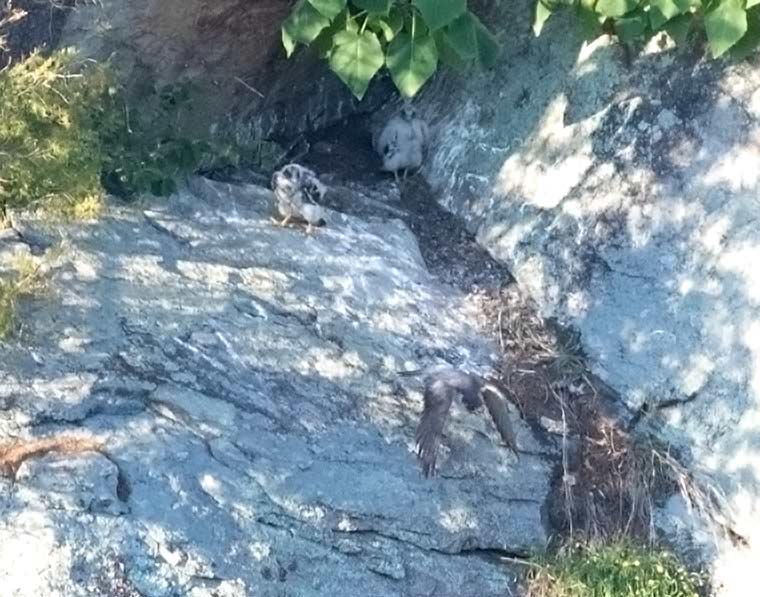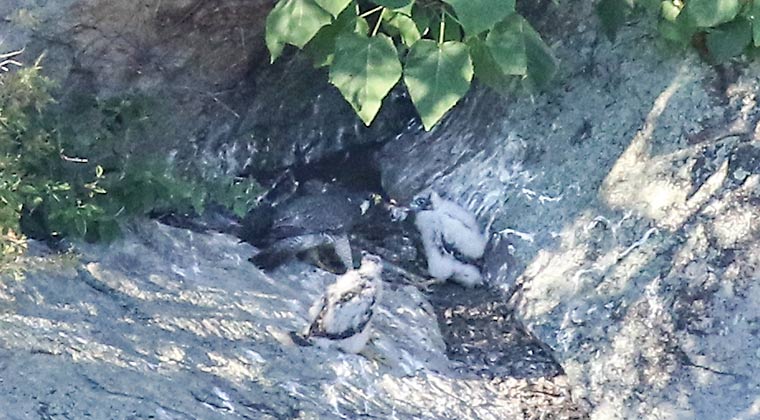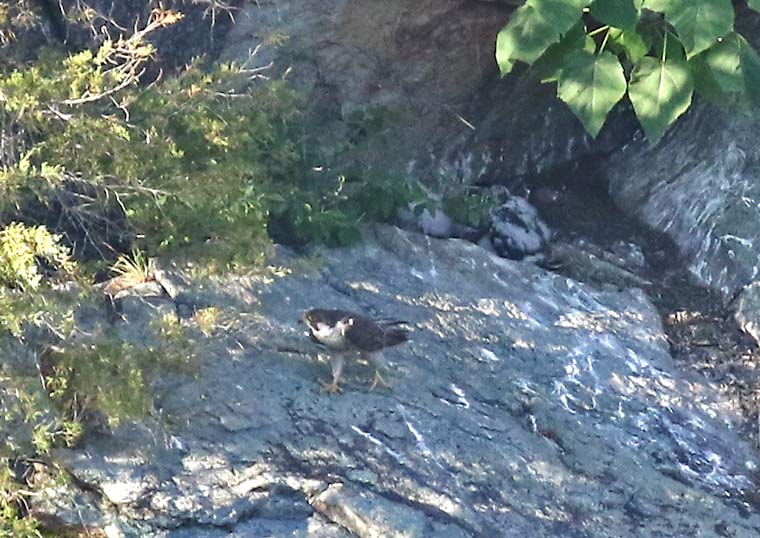Last week we went to Tallulah Gorge to see the newly famous nesting Peregrine Falcons (Falco peregrinus). This is the first pair of peregrines known to nest in a natural habitat in Georgia for about 80 years. The last known nest in a natural site in Georgia was in 1936 at Cloudland Canyon State Park in the northwest corner of the state. Peregrine Falcons populations were greatly reduced primarily because of widespread use of DDT. Great effort has been made to restore these wonderful birds. A couple of pairs have been nesting on tall buildings in Atlanta for a few years, but the Tallulah Gorge birds have selected a natural habitat.
The birds are nesting in a small indentation on the north side of the Gorge (yellow arrow). In order to see them, you need to hike down the south rim trail for a short distance on a well-maintained trail. However, since you need to look completely across the gorge to see them, some good optical equipment is in order. Binoculars are OK, but a spotting scope will give a much better view. The photograph above shows the view toward the nest from the south rim. I used a 100 mm lens on my camera and the picture is uncropped. The yellow arrow shows the position of the nest.
The rest of the images in this post were produced by cranking my lens up to 400 mm and doing some cropping. The image above shows the two peregrine chicks in their nesting cavity. They are beginning to develop their dark adult feathers which will replace the white down that still covers most of their bodies. A word on terminology here…a baby falcon is sometimes called an eyas (or eyass), particularly when referring to a bird that has been removed from the nest for use in falconry. The term comes from a corruption of French “un niais”, which means “a nestling”. I just call them chicks in this post.
One of the parents has just arrived carrying something to feed the chicks. Notice that both chicks are now up and alert anticipating a meal.
To our surprise, the other parent arrived and snatched the food from the first parent. If you look carefully, the food can be seen hanging from the second parent’s beak.
This photograph is blurred, but it shows the food dangling from the second parent’s beak as it flies off.
The first parent had nothing left to feed the chicks, so it then took to the air.
After about 30 minutes one of the parents returned and began to feed the chicks. The second parent did not show up this time. The chick not being fed did not, at first, try to get any of the food. It just looked on. Later the parent gave the second chick part of the food.
After the food was gone, the parent walked into the adjacent brush, and we lost sight of it. We wish the falcon family good luck and hope they return next year.

